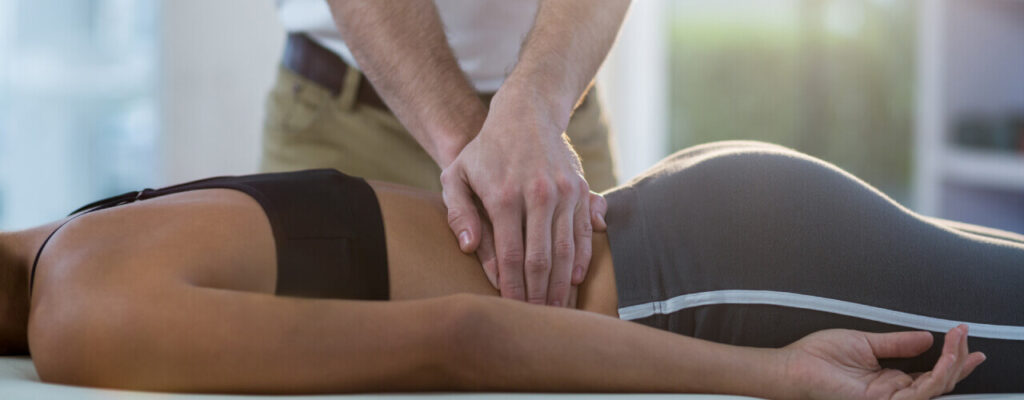Yes, it is normal for a massage to cause some discomfort, but it should not be painful. A massage should be customized to your comfort level.
Getting a massage is often a relaxing experience that can provide numerous physical and mental benefits. However, some people may wonder if it’s normal for a massage to be painful. We will explore whether or not it’s okay for a massage to cause discomfort and what the possible reasons could be behind experiencing pain during a massage.
Additionally, we will discuss what to do if you find yourself in pain during a massage session, and how to communicate effectively with your massage therapist to ensure a comfortable and enjoyable experience. So, let’s delve into the nuances of massage therapy and understand if it’s okay for a massage to be painful.

Credit: physicaltherapyinstitute.com
Exploring The Myth
Common Beliefs
For a long time, there has been a prevalent belief that a massage has to be painful to be effective. Many people hold onto the idea that if a massage doesn’t cause discomfort, it’s not delivering any real benefits. This common misconception has led to numerous individuals enduring unnecessary pain during massage sessions, thinking it’s a necessary part of the process.
Debunking Misconceptions
Contrary to popular belief, a massage doesn’t have to be painful to be beneficial. In fact, painful massages can actually do more harm than good. It’s important to understand that discomfort doesn’t equal effectiveness. A professional massage should focus on alleviating tension and promoting relaxation, not causing distress. Skilled practitioners are adept at providing a therapeutic massage experience without crossing the line into painful territory.
Understanding Pain In Massage
Understanding Pain in Massage
Many people seek massage therapy for relaxation, pain relief, and overall wellness. However, the concept of experiencing pain during a massage can be confusing. Understanding the various types of discomfort and their causes can help individuals make informed decisions before, during, and after their massage session.
Types Of Discomfort
There are two main types of discomfort that individuals may experience during a massage: discomfort associated with the intensity of pressure and discomfort associated with underlying health conditions.
Experiencing discomfort due to pressure intensity is common during deep tissue or sports massages. The pressure applied can sometimes lead to a sensation of discomfort or mild pain. On the other hand, individuals with underlying health conditions such as chronic pain or inflammation may experience discomfort during a massage due to their condition.
Causes Of Pain
The causes of pain during a massage can vary based on individual circumstances. Muscle tension, knots, and adhesions are common triggers for discomfort during a massage. These issues can cause localized pain and discomfort when pressure is applied to these areas.
In some cases, incorrect massage techniques or overexertion by the massage therapist can lead to discomfort or pain. It’s essential for the therapist to assess the client’s comfort level and adjust their techniques accordingly to prevent unnecessary pain.
Benefits Of A Painful Massage
Benefits of a Painful Massage:
Release Of Tension
A painful massage is effective in releasing built-up tension in the muscles.
Promoting Healing
The discomfort from a deep tissue massage can stimulate the body’s natural healing process.
Signs Of Too Much Pain
Experiencing too much pain during a massage can indicate underlying issues. Signs include intense discomfort, bruising, or worsened soreness post-treatment. It’s crucial to communicate with your therapist about pain levels to ensure a safe and effective massage experience.
Listening To Your Body
When it comes to receiving a massage, it’s important to prioritize your body’s signals and listen to what it’s telling you. Ignoring pain during a massage can lead to unfortunate consequences and hinder the benefits you are seeking. Pay attention to any discomfort or excessive pain you may be experiencing.
Communication With Your Masseuse
Effective communication with your masseuse is crucial in ensuring a positive massage experience. Expressing any concerns or pain levels to your masseuse is essential in maintaining a comfortable and safe session. Be open and honest about your pain threshold, allowing them to adjust the pressure accordingly.
While some discomfort during a massage can be expected, there are clear indicators that the pain may be excessive. It’s important to identify these signs to prevent any potential harm. Here are a few key indicators to watch out for:
- Prolonged and Intense Pain: If you experience extended periods of sharp or intense pain, it may be an indication that the pressure being applied is too much for your body to handle.
- Worsening of Pre-existing Conditions: If you notice that your pre-existing conditions, such as muscle injuries or chronic pain, worsen during or after the massage, it’s a clear sign that the pressure may have been excessive.
- Involuntary Muscle Tension: Excessive pressure can cause your muscles to involuntary tense up or contract, leading to discomfort and even potential strains.
- Localized Bruising or Swelling: Any visible bruises or swelling on specific areas of your body post-massage could be an indication that those areas were subjected to too much pressure.
Remember, the purpose of a massage is to relax and rejuvenate your body, not to cause unnecessary pain or harm. Always prioritize your physical well-being and be attentive to your body’s responses during a massage. If you notice any signs of excessive pain, communicate with your masseuse to make necessary adjustments and ensure a more enjoyable and beneficial experience.
Tips For A Comfortable Massage
Getting a massage can be a wonderful experience that helps to relax and rejuvenate both the body and mind. However, it is important to ensure that the massage is a comfortable and enjoyable experience for you. Here are some tips to help make your massage as comfortable as possible:
Setting Expectations
Before you schedule a massage appointment, it is important to have a clear understanding of what to expect during the session. Communicate your preferences and any specific areas of concern to the therapist so they can tailor the massage to your needs. Knowing what to expect will help you feel more relaxed and comfortable throughout the entire experience.
Finding The Right Therapist
Choosing the right therapist is crucial to having a comfortable massage. Research different therapists in your area and read reviews to find someone who is experienced, professional, and has a style that suits your preferences. A good therapist will listen to your concerns and ensure that the pressure they apply during the massage is comfortable for you.
Communicate Your Needs
During the massage, don’t be afraid to speak up and communicate your needs. If the pressure is too intense or too light, let the therapist know so they can adjust accordingly. Remember, they are there to help you relax and alleviate any discomfort, so don’t hesitate to provide feedback and ask for any adjustments that will make the massage more enjoyable for you.
Focus On Deep Breathing
Deep breathing is a simple but effective technique to enhance your comfort during a massage. Take slow, deep breaths in and out, allowing yourself to deeply relax and release any tension in your body. Focusing on your breath will help to calm your mind and allow you to fully benefit from the massage.
Choose A Comfortable Position
Find a position that is comfortable for you before the massage begins. Whether it’s lying on your back, stomach, or side, make sure you’re in a position that allows you to fully relax and enjoy the experience. Your therapist can also provide additional pillows or bolsters to support your body and make you feel more comfortable.
Avoid Eating A Heavy Meal
It’s best to avoid eating a heavy meal prior to your massage appointment. A full stomach can make you feel uncomfortable and bloated during the massage. Instead, opt for a light, healthy snack a few hours before your massage to ensure that you’re comfortable throughout the entire session.
Stay Hydrated
Drinking plenty of water before and after your massage can help improve your overall comfort and well-being. Water helps to hydrate your muscles, making them more pliable and less likely to feel sore after the massage. Additionally, staying hydrated can help flush out any toxins released during the massage, leaving you feeling refreshed and rejuvenated.
By following these tips, you can ensure that your massage is a comfortable and enjoyable experience that leaves you feeling relaxed and rejuvenated. Remember, communication is key, so don’t hesitate to speak up and let your therapist know how they can make the massage as comfortable as possible for you.

Credit: apexptnh.com
Frequently Asked Questions On Is It Okay For A Massage To Be Painful
Is It Good If A Massage Hurts?
A massage shouldn’t hurt. It’s normal to feel some pressure, but pain isn’t good. Let your therapist know if it hurts.
Is It Common And Normal To Feel Pain During A Deep Tissue Massage?
Pain during a deep tissue massage is common due to intense pressure on muscles. It may indicate tightness and muscle tension. However, the level of discomfort varies for each person. Communicate with your therapist about your pain tolerance for a more comfortable experience.
Why Does My Deep Tissue Massage Feel Like Its Burning?
A deep tissue massage may feel like burning due to increased pressure on muscles. It stimulates blood flow and triggers inflammation response, causing the sensation.
How Much Pain Is Normal After A Massage?
Soreness or slight discomfort after a massage is normal, but it should not be severe. Pain that lasts more than a day or is intense may indicate an issue. Regular communication with your massage therapist will help ensure a comfortable experience.
Conclusion
It’s normal for a massage to be uncomfortable, but pain should never be the goal. Communication with your therapist is key to ensure a positive experience. Listen to your body and speak up if anything feels too intense. Remember, a massage should leave you feeling relaxed and rejuvenated, not in pain.



